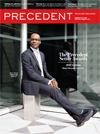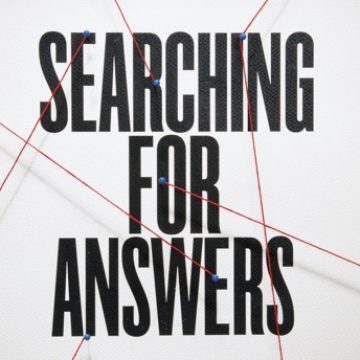AT FIRST, CHRISTA BIG CANOE WAS THRILLED. The federal government had finally launched something that she, along with plenty of other Canadians, had been demanding for decades: a national inquiry into why so many Indigenous women go missing or are killed. Big Canoe knew that Indigenous women make up 16 percent of female murder victims, but only four percent of the female population. And that close to 1,200 Indigenous women are currently missing.
So when Prime Minister Justin Trudeau announced what’s officially called the National Inquiry into Missing and Murdered Indigenous Women and Girls, in the summer of 2016, Big Canoe felt it was a necessary move. At the time, she was the legal director at Aboriginal Legal Services in Toronto. In that role, she ran a legal clinic that often helps victims of gender-based violence navigate the legal system. “I’ve been advocating for an inquiry for years,” she says. “I saw this as a real opportunity to wake the public up.”
But then Big Canoe read what, exactly, the inquiry would study. In the official mandate, the government called for a probe into the “systemic causes” of violence against Indigenous women, with a focus on “underlying social, economic, cultural, institutional and historical causes.” Big Canoe was disappointed that it didn’t call, specifically, for an examination of how police conduct makes Indigenous women vulnerable to violence. To her, there is no doubt: police are part of the problem. “Investigations involving Indigenous women are not prioritized the same way as other cases,” she says, adding that she’d seen this play out in her work with Aboriginal Legal Services. “I’m speaking from direct experience.” Big Canoe openly voiced her frustration, telling a reporter with the Toronto Star, “It just has to be that police investigations are on the table.”
So Big Canoe, a member of the Georgina Island First Nation, was surprised to get a phone call around that time from the commissioners of the inquiry. They offered her a job on the inquiry’s legal team. For a moment, she hesitated. “But then I thought, You can’t be critical unless you’re willing to contribute,” she says. “I felt compelled to say yes.”
After making that decision, Big Canoe took a two-year leave from Aboriginal Legal Services and became one of nine lawyers who have sidelined their practices to act as counsel to the inquiry. One of the legal team’s core tasks is to put together the hearings, officially called truth-finding gatherings, that make up the foundation of the process. These gatherings, already underway, will continue to take place over the next year. Many of them will hear from those affected by violence against Indigenous women: survivors, family members, friends and community leaders. From that testimony, the inquiry hopes to glean the root causes of the violence.
The government never revised the mandate of the inquiry to include police. But the legal team has the power to drive the agenda in whatever direction it chooses. And Big Canoe promises that, throughout the inquiry, police conduct will be on the menu.
In fact, a spate of gatherings will hear from institutions, such as police and child-welfare services, that may have failed to protect Indigenous women. They’ll testify whether they want to or not: the commissioners have the power to subpoena any witness that is relevant to the mandate of the inquiry.
“We want to place the practices of institutions under a forensic microscope,” says Susan Vella, the commission’s lead counsel and senior counsel at Rochon Genova LLP, where she specializes in civil sexual-assault cases.
To prepare for the gatherings, the legal team spent months canvassing Indigenous communities and meeting with potential witnesses. Beyond the logistical demands of such a project, the lawyers face something profound. “We’re asking people to tell us about the darkest moments in their life,” says Big Canoe. “If we think we can do that, and it won’t hurt them, we’d be foolish.”
KAREN SHOWSHOE WAS FOUR YEARS OLD, growing up in Vancouver, when she witnessed a home invader beat a friend of her mother’s to death. As a result, she suffered from PTSD as a young child. And in high school, she had chronic panic attacks.
By the 12th grade, Snowshoe stopped going to class. Throughout her 20s, she took a smattering of courses at college and university, and found work as an insurance adjuster. And at 29, she applied to law school. The next year, she started at the University of British Columbia. Her dream was to become a judge. “The makeup of judges across Canada does not reflect the diversity of the population,” says Snowshoe, a member of the Gwich’in Nation.
As a junior lawyer, she landed a few stints as an adjudicator on a range of panels, including the Northwest Territories and Nunavut Workers Compensation Appeals Tribunal. Then, in 2010, she started to work as an adjudicator for the independent-assessment process for survivors of abuse in Indian Residential Schools. She would decide how much money the federal government should pay out to those who filed a claim. “Because of my own history, I could develop a rapport. I understood something about their lives.”
After Snowshoe did that job for six years, she started to write an application to become a federal judge. Then came a job offer to work on the inquiry. “I didn’t say yes right away,” she says. “I’d spent years doing work that dealt with — well, there’s no other way to put it — the rapes of children, to the point of sexual and psychological torture. Part of me wanted to sit on the federal court and hear tax cases, you know?”
But Snowshoe, based in Vancouver, knew that the legal team would be in charge of designing the gatherings at which witnesses would recount traumatic moments from their past. Few lawyers would be as well suited to the task as Snowshoe. “I couldn’t say no.”
Hiring lawyers like Snowshoe, who have experience with traumatized witnesses, is no accident, says Michèle Moreau, the executive director of the inquiry. “That was one of our goals from the start.”
In addition to Snowshoe, Vella and Big Canoe, the legal team includes Alain Arsenault (a top civil litigator in Montreal) and Wendy van Tongeren Harvey (a Crown prosecutor in Vancouver). Also on the team is Fanny Wylde, a prosecutor from Pikogan, a small town in northern Quebec. “I have a ton of experience dealing with the sensitive testimony of victims,” says Wylde, a member of the Pikogan Algonquins. “I’ve dealt with victims of violence, both women and children.”
Together, these lawyers designed the truth-finding gatherings with a “trauma-informed” approach. They’ve made sure that mental-health professionals (counsellors, therapists, elders, support workers) will be available throughout the process. Witnesses can also testify through art, from poetry to painting. “For children, this may be the best way for them to communicate,” says Vella. “None of this means we’re naïve. We can’t guarantee there will be no re-triggering of traumatic memories or feelings. But we’re aware of that.”
DO WE REALLY NEED AN INQUIRY? After all, we already know many of the reasons that Indigenous women are vulnerable to violence. When the Truth and Reconciliation Commission of Canada issued its final report, in 2015, it probed the root causes
of violence against Indigenous women with academic rigour. One of the primary causes it identified was poverty. Indigenous women are twice as likely to be unemployed as non-Indigenous women. As a result, close to 30 percent of them live in poverty.
This has a raft of consequences. To start, they lack the resources to escape an abusive partner. Second, they can’t afford safe transportation. As the report puts it, Indigenous women “often have to resort to hitchhiking rides with strangers.”
Poverty also forces women to make money through risky behaviour. “Many victims of violence, though certainly not all of them, are sex workers,” says Naiomi Metallic, the chancellor’s chair in Aboriginal law and policy at Dalhousie University. “This is often because they don’t have access to gainful employment.” And working in the sex trade, she explains, increases the risk of violence.
Then, of course, there is the matter of the police. In 2013, Human Rights Watch published its exhaustive investigation into the relationship between the RCMP and Indigenous women in British Columbia. The authors of the report write that, when interviewing Indigenous women in the province, they heard multiple “allegations of rape or sexual assault by RCMP officers.” This creates a culture of fear. “Some Indigenous women we’ve spoken to are afraid to go to the police when they’re victims of violence,” says Farida Deif, the Canadian director of Human Rights Watch. “So their cries for help often go unheard until they end up a corpse.”
So does Deif think a national inquiry is necessary? “We definitely think it’s needed to address the crisis,” she says. It can examine police behaviour across the country in a way no one has before.
Other subjects deserve more scrutiny, too. The inquiry will, for instance, examine how the legacy of residential schools contributes to violence. One study, in British Columbia, has already found that women with a parent who went to a residential school are twice as likely to become victims of sexual assault as other Indigenous women.
The inquiry can build on that finding. “We have not pre-judged any situation, but it’s fair to assume that intra-familial violence and sexual abuse occurs in Indigenous communities, as it does in all communities,” says Vella. “We want to ask deep questions, like: Why does it occur? Was the perpetrator sexually abused as a child, by a priest, and he keeps that in his heart for all these years? Do his demons lead him to substance abuse? Does he become an angry man who takes it out on his partner?”
Big Canoe, for her part, wants the inquiry to stamp out racist stereotypes. “We have iconized Indigenous women as hyper-sexualized,” she says. “I hate saying this word, but the word ‘squaw’ is part of that tradition.” The racial slur connotes sexual promiscuity.
Those stereotypes, she says, can kill. Big Canoe has seen police ignore cases that involve Indigenous women, and, in her view, historical stereotypes are at play. “They are less-than-worthy victims,” she says. “They are seen as disposable.” Big Canoe hopes the press coverage of the inquiry will be intense. “Once we show people the truth, they can’t un-know it.”
AFTER THE TRUTH-FINDING GATHERINGS ARE OVER, the legal team will offer advice and guidance to the commissioners as they draft the final report. It will include a slate of recommendations. One of the great fears is that, once it comes out, it will sit on a shelf and collect dust. “It is my sincere hope that this will not happen,” says Vella. “But if it did, that would be a tragedy.”
But it’s possible, she admits, that governments and institutions will ignore the recommendations. Which is why the legal team plans to investigate what Indigenous communities can do to make women safe. “If we only make recommendations to the government,” says Vella, “then we’re effectively telling Indigenous people: ‘Don’t worry. You’ll be looked after.’ If you look at Canada’s history, that doesn’t always happen.”
At the gatherings, then, they’ll be listening for community driven initiatives that prevent violence. “Have the aunties in one community created a safe house? Did it work? If yes, maybe that’s what we should be supporting,” says Vella. “We’ll be looking for things like that. We want to empower communities to carry on without us.”

This story is from our Summer 2017 issue.
Photography by Vicky Lam


